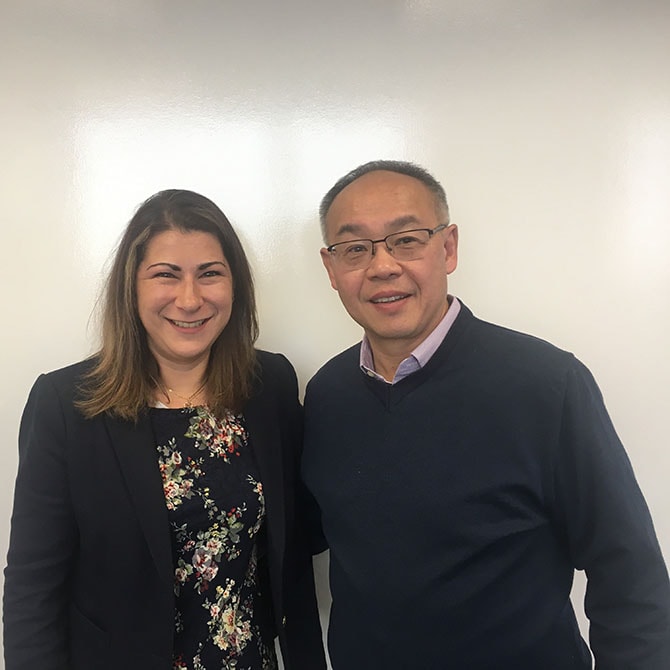Tax transformed case study
Getting on track
with tax transformation

By automating processes, CP Rail’s tax department has improved the timeliness, accuracy and transparency of its financial reporting
Client: CP Rail
Services: Tax
Country: Canada
Introduction
Before its transformation, the tax department at the Canadian Pacific Railway Co. was relying on outdated technology and business processes that slowed its financial reporting of the tax provision and, in particular, the calculation of its deferred tax liability. With CP’s finance transformation already underway, the tax function was facing pressure to improve as well. Since then, it has automated many of its processes to improve timeliness, accuracy and transparency while generating new efficiencies and relieving employees of mundane tasks.
Challenge
Part of the motivation to transform came from long-standing demands for more timely and accurate data from CP’s tax department. Since end-of-year reports are made public at the end of January—in line with competitors—the tax team has limited time to gather data and prepare it for financial reporting with the required tax provision and deferred tax liability balance. Many of these processes were done manually, which was labour-intensive, time-consuming and prone to error and made it challenging to give an accurate estimate of the tax provision.
At the same time, internal stakeholders were looking to use the data for other purposes. For the company, having access to more accurate and timely data would help inform decision making so it could respond more quickly to shifts in the market. Moving into the digital age would also help the company attract and retain staff, particularly the newest generation of tax practitioners who expect access to the latest technologies in their work.
This was part of a broader transformation at CP that began five years ago, when new management introduced a mandate to transform business processes and become a precision railroad company. With the company as a whole undergoing such major changes, the tax department embraced the opportunity to shift how it operated as well.

“We’re no longer outdated. With new tools and processes in place, we can make better management decisions. The tax department works together with the business, so if there’s a sudden change in the market, we can react faster and be more competitive.”
Approach
Getting started on the tax transformation journey meant finding the right tax automation approach and tools and upskilling staff. Several off-the-shelf solutions were available, but most fell short of meeting the tax department’s needs. Costs and implementation timelines were also factors, since the company would have to pay annual licensing fees, even though the tax team didn’t need most of the features and functions.
With those concerns in mind, the company turned to newer Microsoft Excel functionality to respond to the pressing needs. The team decided first to automate the Canadian tax provision calculation by using PwC’s Tax Data Hub to draw on information contained in CP’s systems and more efficiently input data into the tax model.
Following the success of these changes and building on the momentum, the next phase was to automate those processes for CP entities outside of Canada. The company also automated the consolidation and tax note disclosures. It took about 18 months to complete the process of automating the tax provision and the deferred tax liability calculation across CP.
Rolling out new technology also required a change management strategy. Front-line employees had long been facing criticism for not calculating more accurate numbers on a timely basis at year-end, so it was easy to get them on board. But others needed training and some persuasion to help them understand how—and why—to use the new tools and processes. The plan is to continue offering education to the tax team to ensure they’re up to date on what’s new in the market.
Impact
As a result of its tax transformation journey, CP has improved the accuracy, transparency and timeliness of its financial reports, and the tax team now has more time to review and perform analytical work. More recently, it has added Canadian tax compliance to its automation journey. Overall, the tax team is happier, since mundane and repetitive administrative work—such as transcribing information—has been greatly reduced, and employees can focus more on in-depth planning and research.
CP has also benefited from lower audit costs, since the tax team now has a greater understanding of how the numbers fit into the bigger picture and employees have a better sense of whether the results make sense or not. The overall review process is smoother, with controls in place for compliance with the Sarbanes-Oxley Act.
The transformation has been so successful that CP is looking at further automation in other areas, such as property taxes and tax issues related to its cross-border mobility program. Thanks to automation as part of its tax transformation journey, CP now has timelier forecasts and more accurate budgets, helping the company save money while becoming more competitive.
Learn more on how to enable tax transformation
Contact us


Lead Client Partner and National Leader, SR&ED and Incentives, PwC Canada
Tel: +1 403 509 6373

















